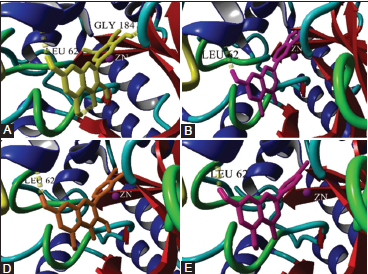Anti-inflammatory potential of polyphenols: Combining in silico prediction and in vivo data
DOI:
https://doi.org/10.17532/jhsci.2024.2481Keywords:
Flavonoids, phenolic acids, rheumatoid arthritis, inflammation, C-reactive proteinAbstract
Introduction: Rheumatoid arthritis (RA) is a chronic inflammatory disease characterized by joint inflammation and destruction, leading to significant pain and disability. Adenosine deaminase (ADA) is identified as a biomarker for RA’s inflammatory process. This study aims to investigate the potential of flavonoids and phenolic acids to inhibit ADA activity (in silico) and evaluate their anti-inflammatory effects in a RA model (in vivo).
Methods: The molecular docking study was conducted using YASARA Structure 19.12.14. software following the Auto Dock 4.2 protocol. A rat model with pristane-induced arthritis was used to test the anti-inflammatory effect of selected polyphenols. The consistency of the development of the rat model was evaluated through the following indicators artistic score, paw volume, and body weight. Quercetin was administered intragastrically at doses of 150 and 400 mg/kg over 15 days. The C-reactive protein (CRP) level in serum was measured with an automatic biochemical analyzer. Statistical analyses were performed using SPSS 29.0.2.0.
Results: Molecular docking simulations showed flavonoids inhibited ADA activity with inhibition constants ranging from 0.012 mM to 0.190 mM. In the in vivo RA model, quercetin significantly reduced joint inflammation and serum CRP levels at a higher dose of 400 mg/kg.
Conclusion: Quercetin shows promise as an anti-inflammatory agent for RA by targeting ADA, suggesting that flavonoid-rich plant extracts could enhance RA treatment.
Downloads

Downloads
Published
Issue
Section
Categories
License
Copyright (c) 2024 Emina Korić, Irma Gušić, Kemal Durić, Nermina Žiga-Smajić, Amar Osmanović, Naida Kapo, Haris Nikšić

This work is licensed under a Creative Commons Attribution 4.0 International License.










